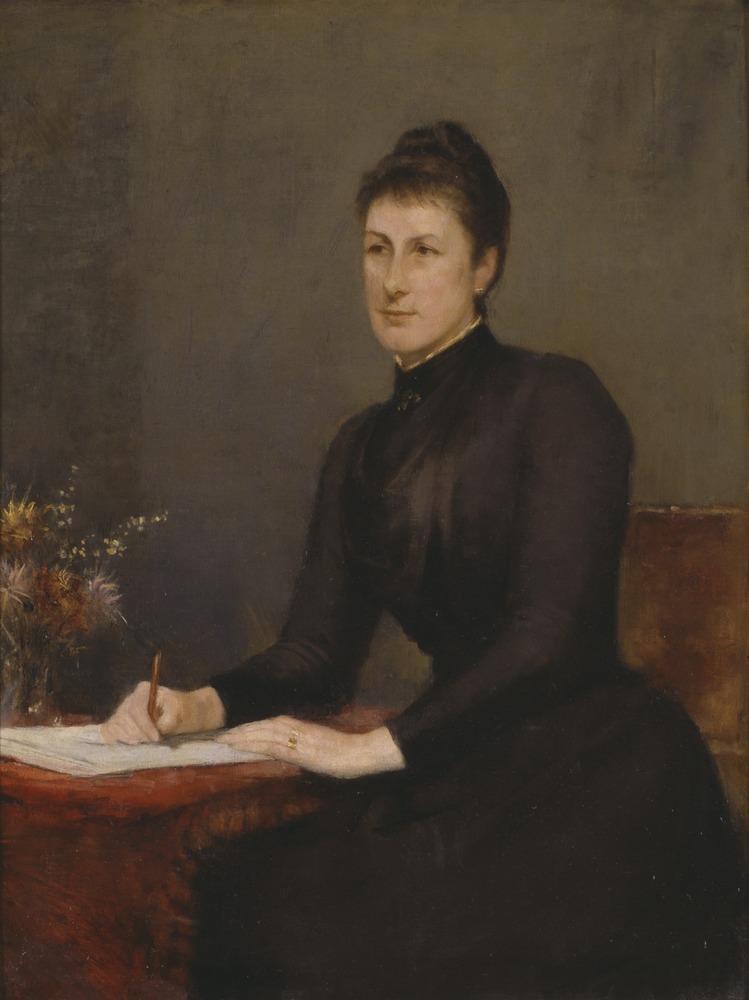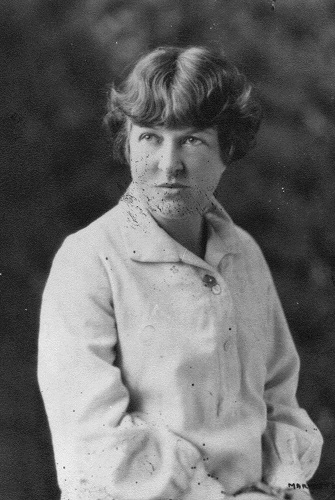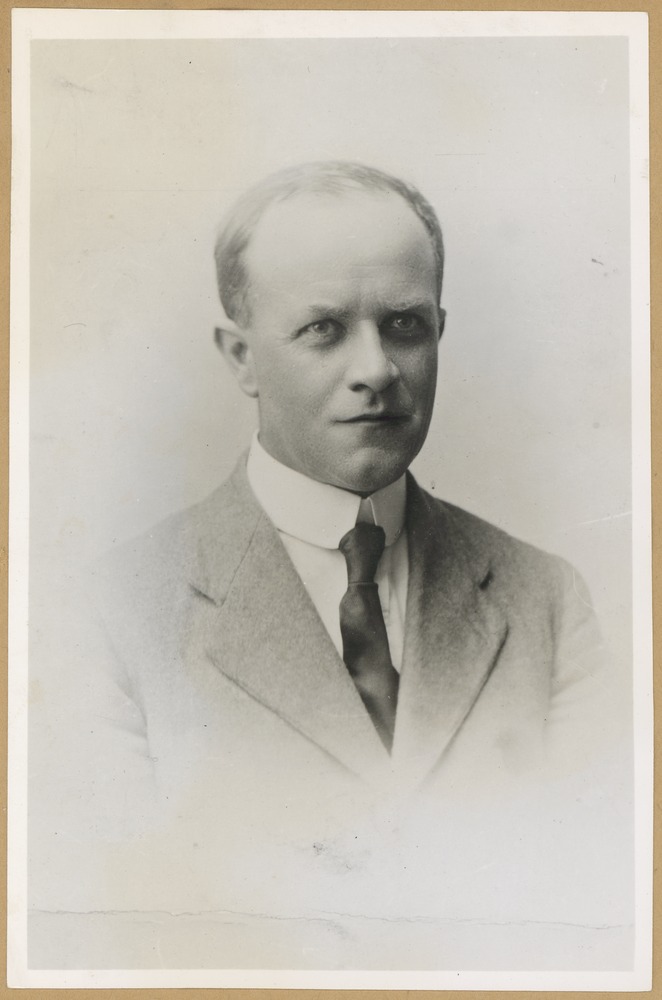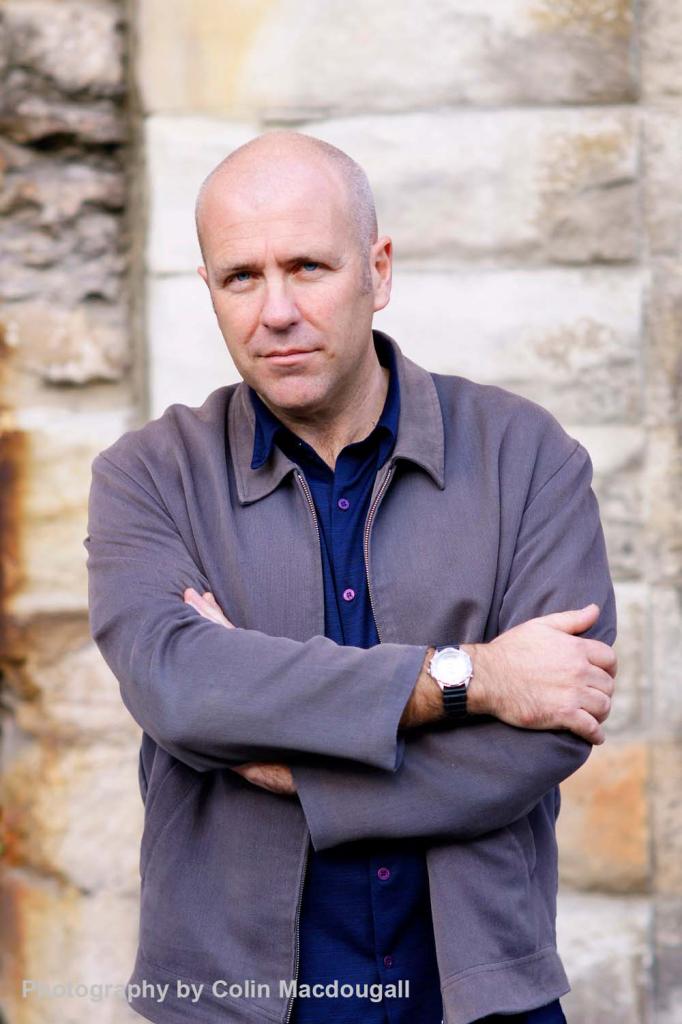AustLit
-
At the beginning of this introduction there are three short descriptions of Tasmanian writing lives, at the end I would like to point to three different examples of Tasmanian authorship: Jessie Couvreur (‘Tasma’), the brother and sister writing duo Roy and Hilda Bridges, and the internationally renowned novelist Richard Flanagan. All are recognised Tasmanian authors but their styles of engagement with the institutions of authorship and the role of Tasmania as place, as history, and as a site of narratives plays very different roles in how they made, and make, themselves as authors.
-
‘Tasma’ (1848-1897) is one of the most well-known writers to be associated with and write about Tasmania, even adopting the place in her persona as author. Yet she wasn’t born there; she was born Jessie Catherine Huybers in London, her father a wine merchant and her mother a private school teacher. In 1852 the family emigrated to Hobart, Van Diemen’s Land, living in Cleburne House, Davey Street, and then at Highfield, a 5-acre property on the hillside in West Hobart, overlooking the Derwent. Her father’s warehousing and merchant business thrived, although the marriage with Jessie’s mother soured. There is a memorable scene of children playing on the hillside below Knocklofty in the 1860s in ‘Tasma’’s novel Not Counting the Cost (1895). As a young girl, Jessie was befriended by Louisa Ann Meredith, a formative influence on her idea of herself as an author. She married Charles Fraser, in Hobart, in 1867, a marriage that would run into trouble, the ‘crowning error of her life’ (Clarke 21). The couple moved to Victoria soon after their marriage but by 1872 their incompatibility was such that Jessie left Charles, returning to her family in Hobart, then travelling to Europe with her mother, Charlotte, who had always felt in exile in Hobart. Returning to Australia in the 1870s, partly reconciled with her husband, Jessie began to publish articles and stories in journals like the Australasian, the Melbourne Review and the Australian Ladies’ Annual, achieving a wide popular readership. In 1879 she returned to Europe, living with various members of her family in London, Paris and Brussels and supporting herself from her writing and from a very successful career as a public speaker. Bravely, Jessie returned to Melbourne in 1883 to pursue a divorce action against Charles Fraser. The proceedings were reported in the Age and the divorce was granted. In 1885 Jessie married Auguste Pierre Louis Couvreur, 21 years her senior, and a Belgian politician, journalist (Times correspondent) and educationalist. They settled in Brussels, where Jessie lived for the rest of her life. Her first novel, Uncle Piper of Piper's Hill : An Australian Novel was published in 1889, having been serialised in the Australasian a year earlier, and brought her fame ‘in a single week’ (Clarke 114). In quick succession, the novels A Sydney Sovereign (1889), In Her Earliest Youth (1890), The Penance of Portia James (1891), A Knight of the White Feather(1892), Not Counting the Cost (1895) and A Fiery Ordeal(1897) established her reputation as the best known Australian writer abroad. Beginning with narratives and scenes of married life in the rural, colonial settings of Australia, often with ‘weak, boorish, egotistical, alcoholic, brutal and dishonest’ husbands, her fiction would increasingly represent the independent minded ‘New Woman’ (see Wilde, Hooton, Andrews 195; Clarke 149-50). Feminist critical work on ‘Tasma’’s fiction, like that of Margaret Harris, uncovers the complex networks of social, national and gendered mentalities in her trans-national fiction. The role of her Tasmanian childhood and her allegiance to her Tasmanian origins evident in her nom-de-plume are part of this reassessment.
See also the AustLit entry on Tasma.
-
Royal Tasman Bridges (1885–1952) and his elder sister Hilda Maggie Bridges (1880-1971) were both professional writers of fiction and lifelong companions as writers. The Bridges were born in Hobart, both educated at schools there, while Roy graduated from the University of Tasmania, in 1905. After a career as a journalist, first at the Mercury, then mostly in Melbourne, where Hilda lived with and cared for him, and a brief sojourn in London, Roy returned with Hilda to Tasmania in 1930 to live on their mother’s family property Wood’s Farm at Sorrell. They lived there for the rest of their lives, ‘impoverished and lonely’ but continuing to write prolifically (Companion to Tasmanian Arts, Heritage and History).
-
Roy’s thirty-six novels, from The Barb of an Arrow (1909) to The League of the Lord (1950; referring to the Anti-Transportation League), most on Tasmanian historical themes, have generally been ignored by critics and scholars of convict fiction, but are defended by Peter Pierce as ‘intelligent, mannered, iconoclastic, obsessive’ and as amounting to a substantial mid-twentieth-century exploration of the social, individual and moral inheritance of a history of transportation and punishment (see Pierce, ‘Roy Bridges’s Fictions’). Roy’s That Yesterday was Home (1948) is a family history and autobiography and his historical romances, after his return to Tasmania, draw on local and family history exploring the anti-Vandiemonian themes of convict rehabilitation and redemption. Hilda’s books include stories for children as well as thirteen mystery and romance novels, some with East coast Tasmanian settings. She also wrote serials and radio scripts for the ABC. So Tasmania, for the Bridges, provided historical and personal subjects for two closely intertwined and collaborative authors’ works.
See also the AustLit entries on Roy Bridges and Hilda Bridges.
-
As the winner of the Commonwealth Writers’ Prize for his 2001 novel Gould's Book of Fish and of the 2014 Man Booker Prize for The Narrow Road to the Deep North (2013) Richard Flanagan (1961- ) is the most successful and high-profile writer to be born and live in Tasmania. The Narrow Road to the Deep North is focalized around the life of Dorrigo Evans, a Tasmanian-born, Melbourne University trained doctor who becomes a prisoner of the Japanese on the Burma railway. As a young man Dorrigo escapes from a vanishing Tasmania, a dying world:
All this [his childhood] was in the days when the world was wide and the island of Tasmania was still the world. And of its many remote and forgotten outposts, few were more forgotten and remote than Cleveland, the hamlet of forty or so souls where Dorrigo Evans lived. An old convict coaching village fallen on hard times and out of memory, it now survived as a railway siding, a handful of crumbling Georgian buildings and scattered verandah-browed wooden cottages, shelter for those who had endured a century of exile and loss. (4)
For a history of the brickmaking, saw-milling and stonemasonry behind this scene of Flanagan’s see the heritage discourse and photography of Frank Bolt’s Vanishing Tasmania. At the end of the Knopf (2014) edition of the novel Flanagan includes his ‘Acceptance Speech’ for the Man Booker Prize, at the Guildhall, London (14 October 2014). There he writes that he does ‘not come from a literary tradition. I come from a tiny mining town in the rainforest in an island at the end of the world. My grandparents were illiterate’ (n.p.). This expression of authorship precisely resembles the frontispiece to Jonathan Swift’s Gulliver's Travels with its fragmentary outline of the Van Diemen’s Land coastline, the conjunction of the London literary and publishing world-centre and the antipodes of literature, the Tasmanian end of the world. And perhaps this sense of being at the Ultima Thule of literariness is transferred to Flanagan’s Evans, who is a lifelong reader of classical literature and an admirer of Tennyson’s poetry in particular. Further, Flanagan rejoices in not being relegated to the ‘literary ghetto,’ and the ‘fractious tribe of writers’ but having become an author with a ‘mass audience’ (‘Speech’). Thus Flanagan reaches for the highest possible humanist rhetoric of authorship, not just worlded but universalised, asserting that the novel is ‘one of our greatest spiritual, aesthetic and intellectual inventions […] Novels are not content. Nor are they a mirror to life or an explanation of life or a guide to life. Novels are life, or they are nothing’ (‘Speech’). This world-novelist persona, though, is only part of Flanagan’s role as author – he has also been a brilliant polemicist, in speeches and press articles, for many local and conservationist causes (see for example, ‘The Rape of Tasmania’). The idea of Tasmanian authorship, as this tiny core sample suggests, is remarkably diverse – individual and collaborative, cross-hatched by trajectories of birth, exile and return, drawing on the most localized histories and biographies, and on the most universal of literary values, symptomatic of historical changes in the modes and economics of publishing.
See also the AustLit entry on Richard Flanagan.
-
However Flanagan’s Narrow Road might circulate as a world novel with a global readership, there is also a less stratospheric tradition of Tasmanian war and POW writing in Jessie Simons’s (1911- ?) autobiographical account of her time in a Japanese prison camp in Sumatra, While History Passed : the Story of the Australian Nurses who were Prisoners of the Japanese for Three and a Half Years (1954; republished as In Japanese Hands: Australian Nurses as POWs, in 1985). Simons was born in Launceston, joined the Australian Army Nursing Corps and arrived in Malaya in September 1941. She was one of the group of nurses and civilians on the Vyner Brooke when it was bombed by the Japanese on 14 February 1942, after the retreat in Malaya and during the fall of Singapore. Simons was one of the survivors, along with Vivian Bullwinkel and Betty Jefferey (author of White Coolies, 1954), of the brutal massacre of those who made it ashore on Bangka Island. Barney Roberts (1920-2005) was an Australian soldier taken prisoner in Greece during the second war and who wrote a memoir of his years in a German labour camp in Austria, A Kind of Cattle (1985). Gregory Day’s 2015 novel Archipelago of Souls also draws an antipodal connection between Australian war experience on Crete and Tasmania. The novel tells the story of an Australian soldier, Wesley Cress left behind on Crete after the allied retreat, and who fights with the Greek resistance. After this traumatic experience he returns to King Island. Day is articulate about the role of islands in the human trauma of war: ‘there's nothing more novelistic than an island, that almost generic metaphor of individual solitude. For Wes to process what he was doing on Crete, it felt like he ought to have a mirror space, another side of the coin. Another island.’ (Ref.)
You might be interested in...








